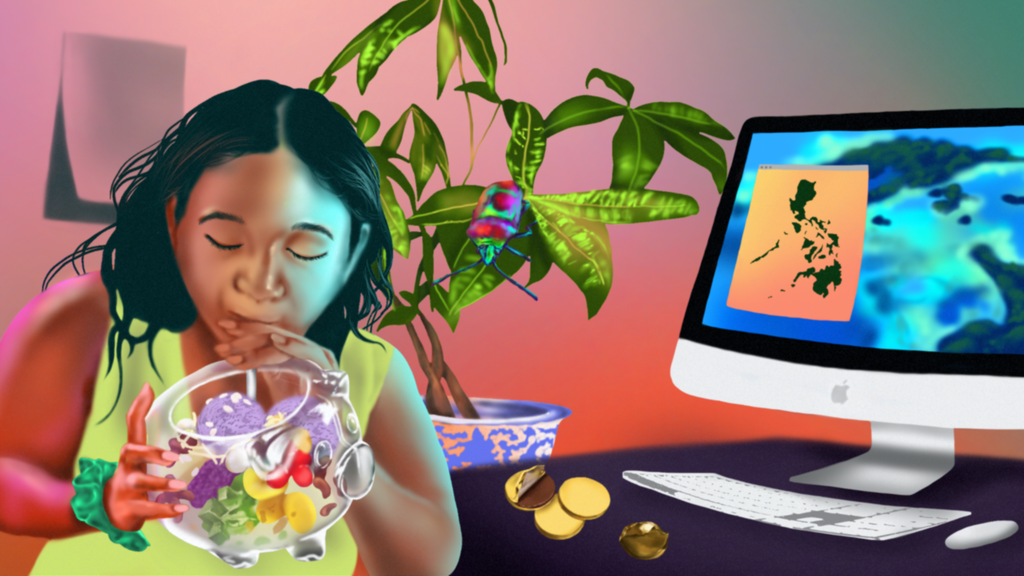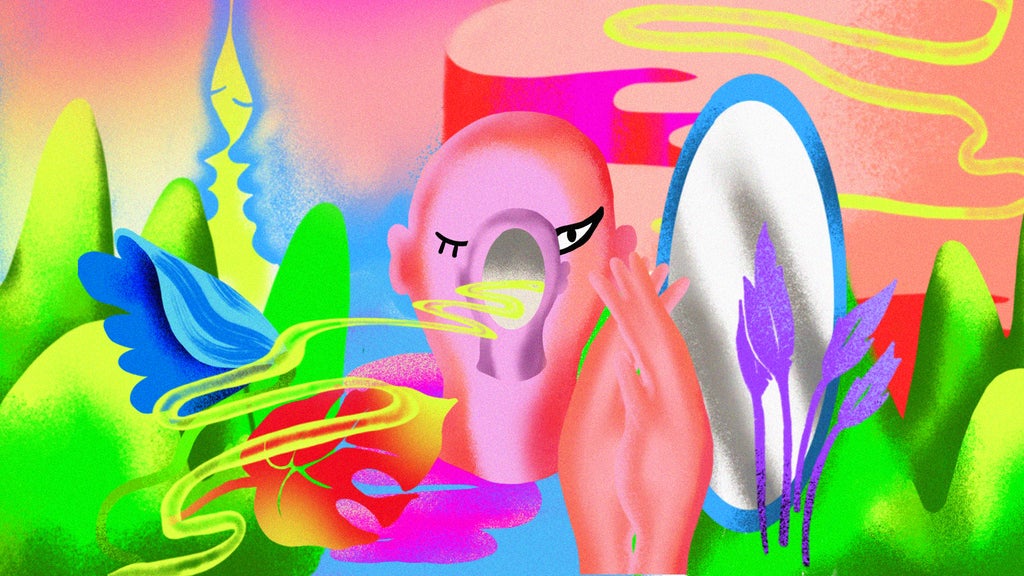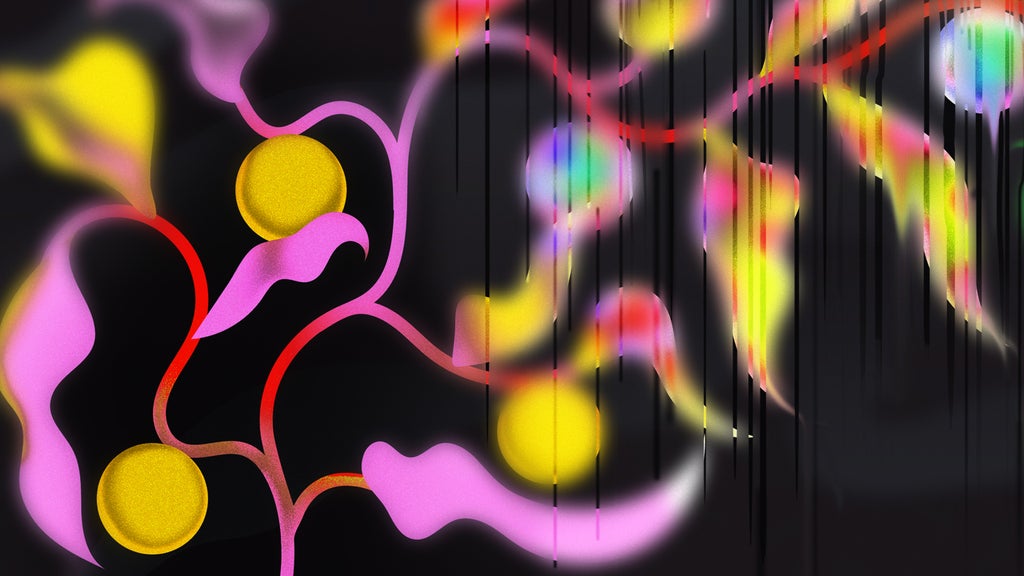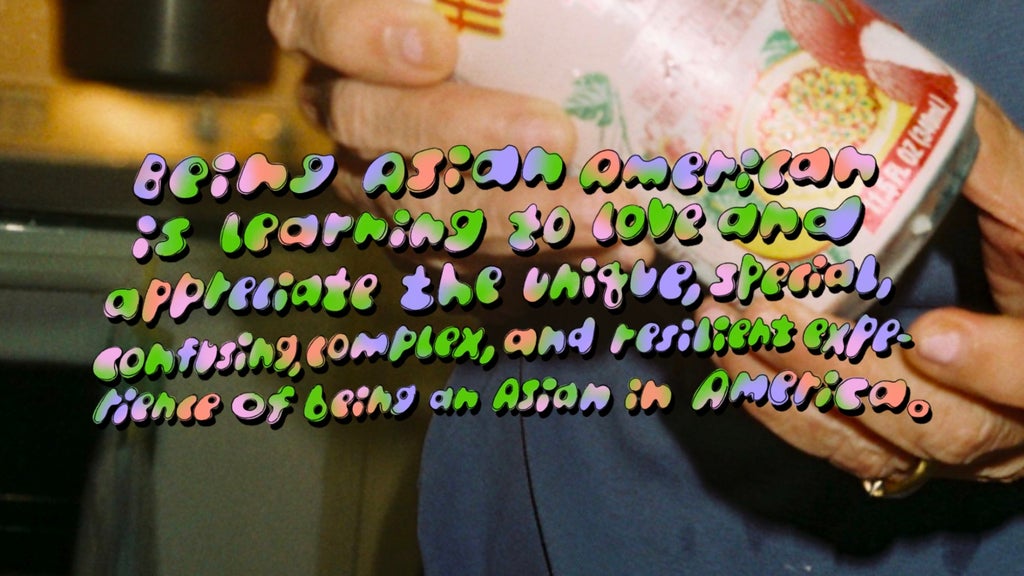Immigrants have long pursued the American Dream and its promise of upward mobility, with better opportunities and more fortune. It’s an ideal that the next generation, understanding the weight of their parents’ sacrifices to create a better life for their families, carries into their future goals and shapes their understanding of needing to fulfill their parents’ own dreams. But for today’s young AAPIs, the idea of the American Dream has evolved into something more than just stable careers and financial security. They’re prioritizing passion over money, and choosing their own paths to success.
Generational differences can make hard conversations with parents even harder, and sometimes it’s not that easy to put our feelings into words. So we asked four artists to illustrate how they view the American Dream through an AAPI lens — and how following their dreams can be a reality.
These have been lightly edited and condensed for clarity.

Samantha Vassor, 24, in South Florida: “For immigrant families like my own, the past concept of the American Dream meant upward mobility, financial success and stability, generational wealth, and access to opportunities we may not have been able to find in our home countries. The number of sacrifices people make in searching for that dream of a stable life, career, and finances result in later generations feeling a need to maintain those legacies of success.
As the stereotype goes, many Asian immigrant kids are expected to have a career in STEM, due to its supposed financial stability, and my family did not always support or understand my choice of entering a career in art and design. I wanted to take a playful approach to what abundance looks like outside the realms of financial pressures. This is my work life: sitting at my desk late at night and reflecting on today’s first-generation experience. I am drinking Halo-Halo from a piggy bank, one of my favorite Filipinx desserts, to express ideas of indulgence and happiness and the constant pressures of money worries. I do most of my projects on the computer, but here, the desktop shows the landscapes of Mindanao, the second-largest island in the Philippines. As a first-generation Filipinx American, I constantly think about the disconnect I have with my mother’s native country and the ways I look for connection. The money tree and chocolate gold coins are other symbols of wealth.
To me, the new American Dream is the opportunity and privilege to choose other ways of finding success and happiness that the generations before us could not. Instead of money, we choose to shift the conversation of wealth and abundance to new passions, appreciation for life, our cultures and histories, and the values and generational knowledge we were taught. Success to me is acknowledging the traumas and fears that come with immigrant experiences and finding other ways of nurturing ourselves.”

Kashton Kane, 30, in Los Angeles: “As a mixed queer kid growing up in Hawaii, it was difficult to navigate through life without locking away parts of myself to prevent others from bullying me. I had to hide my true colors. In my art, I like to create surreal worlds where the characters are gender-fluid with non-human-like skin tones. They are their own creations of their own imaginations and can be whatever they choose to be. Color to me is such an important way to express your own individuality and how you perceive the world. Don’t lock away your color and live in a black and white world.
The American Dream is following your own personal calling and having the freedom to continue on your own path. It’s breaking away from the old you and recreating yourself to be who you were really meant to be and not what you were programmed or taught to believe.
The new American Dream is different from my parents’ in that their generation measured success by buying a home, having a family, making lots of money, and retiring comfortably. While that is all still very relevant, happiness and ‘success’ has become more internal than external. What I hope that people take away from my art is there’s a world of endless imagination where anything is possible. We should feel a strong sense of belonging, joy, inspiration, and confidence everywhere — and at home. I want viewers to learn that a perfect external world doesn’t have to always live up to what you expect. It all starts within you and you just need to love yourself and be kind to yourself and others around you. Practice compassion and empathy. That is The Dream.”

Irene Feleo, 32, in Brooklyn, NY: “My parents immigrated from the Philippines to Australia in the ’90s before my sister and I were born. So from the outside looking in, I imagined the reason behind their motivation to be a beautiful, blooming, and clearly defined vision that would bring stability to and opportunities for our family. When I moved from Australia to the United States in my 20s, I didn’t know the shape of my dream, or what I was pursuing. Open to whatever would come my way, I sought new scenery and experiences with the safety of knowing I could always return home.
My illustration is a fusion of both my parent’s vision and my own; I could not convey my answer without including theirs. The glass is transparent at the root of this blossoming dream, the fruits of their labor, sacrifice, and migration clear to see. I feel like the new American Dream for me is an abstract concept, rich with nuances and shifting distortion that I cannot clearly articulate. That’s why as the plant blooms, the glass becomes blurry and fogged, and the leaves take on a more undefined and vivid form. I hope for people to view this piece and understand that the American Dream for me is a continuation of my parents’.”

Lindsay Arakawa in Tokyo: Because of COVID, I haven’t been able to go home to visit my family in Hawaii for over two years, which is the longest I’ve ever gone without seeing them. Every year prior, I’d visit once a year, and those visits were always so important for me because not only did I get to see my grandparents who are in their mid to late 90s, but I also got to reconnect with the culture and environment that I grew up in and has shaped so much of who I’ve become.
For this illustration, the film photo I’ve chosen features my grandma, who has been incredibly instrumental in my upbringing and appreciation for my Japanese culture, especial when it comes to food. Now that I’m living in Japan, I always think to myself that I’m so lucky to have had a grandma who was born and raised in America, teach me about the kinds Japanese food that is seen as meals prepared at home amongst families.
I say that I’m lucky because so much of my appreciation for Japanese culture started with and continues to be through food, and considering that my grandparents don’t even speak Japanese, but were able to recognize the importance of our culture through food feels special.
I’m really looking forward to going home soon to be with my family and take back some of the things I’ve learned here in the three years I’ve been in Japan to continue to further our knowledge and respect of where we’re from.
Like what you see? How about some more R29 goodness, right here?
from Refinery29 https://ift.tt/PV2cCh6
via IFTTT
